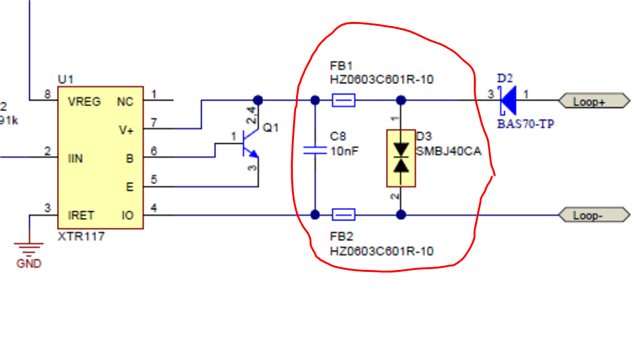Other Parts Discussed in Thread: XTR117
Hi,
I have tried to set up a 4..20mA analog output signal with the XTR115.
Everything works so far. However, I seem to have EMC problems.
If a walki talki or a consumer is connected nearby, the output of the current loop oscillates.
It can be simulated very nicely if you go with the walki talki directly to the line next to the circuit I get the output signal pulled down to 0mA.
I have already tried the ferrite beads, the cap and TVS-diode from the recomendet designs, but nothing seems to help.

Can anyone tell me what I have done wrong and how I can perhaps increase the interference resistance?

